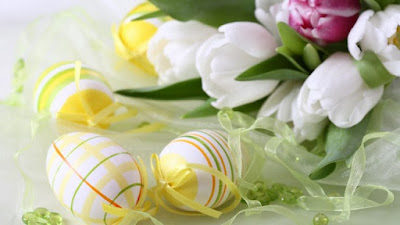On Easter Sunday millions of us will be tucking into delicious chocolate eggs as the Christian world celebrates.
But while many will be at least vaguely familiar with the story of Easter, its relation to eating mountains of oval-shaped chocolate treats is less clear.
So how did it come about?
Easter celebrates the resurrection of Jesus after his crucifixion.
Christians believe Jesus was crucified on Good Friday and rose again three days later. The three days are known as the Easter Triduum.
Even before the birth of Christianity, the egg was seen as a symbol of Spring, a celebration of the rebirth and reinvigoration after the harshness of winter.
Even before the birth of Christianity, the egg was seen as a symbol of Spring, a celebration of the rebirth and reinvigoration after the harshness of winter.
Eggs would then be cracked against one another, leaving just empty shells - a symbol of the empty tomb Jesus left behind.
The tradition survives today in the shape of egg rolling, representing the rolling away of the rock from Jesus' tomb.
Over time, Easter eggs became more and more elaborately decorated, perhaps most famously by Russian jeweler Peter Carl Fabergé, creator of the priceless Fabergé eggs as Easter gifts for Tsars Alexander III and Nicholas II.
Over time, Easter eggs became more and more elaborately decorated, perhaps most famously by Russian jeweler Peter Carl Fabergé, creator of the priceless Fabergé eggs as Easter gifts for Tsars Alexander III and Nicholas II.
The introduction of chocolate eggs is a relatively new phenomenon, originating in France and Germany in the 19th century.
Easter is currently a "movable feast" - a date determined by the lunar calendar rather than the normal Gregorian or Julian calendars, which follow the cycle of the sun.


No comments:
Post a Comment